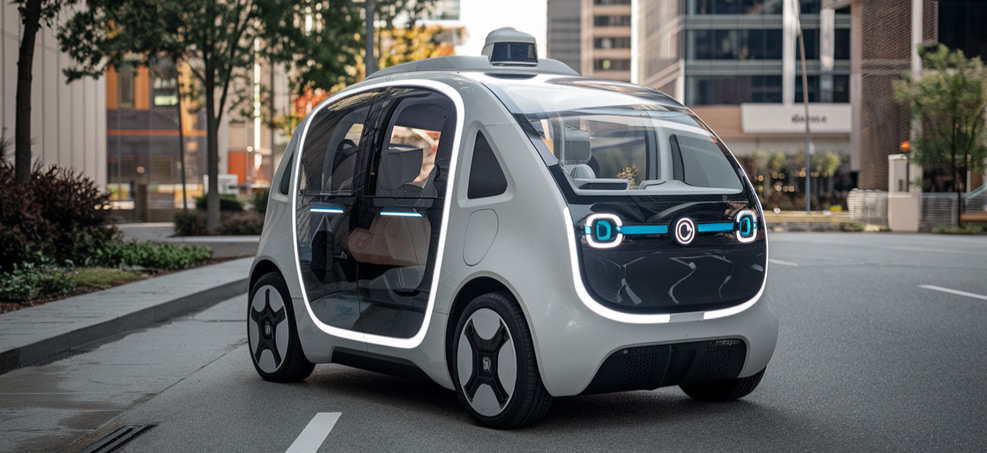Explore the latest in autonomous car technology and what it means for the future of driving.
Imagine a future where your car is the designated driver, and you’re just along for the ride, sipping coffee, catching up on emails, or even sneaking in a nap during your commute.
Sounds like science fiction, right? Well, not anymore.
Autonomous cars are rapidly becoming a reality, and they’re poised to change the way we think about driving forever. Whether you’re excited or skeptical, one thing is certain—self-driving cars are coming, and they’re bringing some major shifts along with them.
But before you start dreaming of stress-free road trips, there are a few things you need to know about the future of autonomous vehicles. Let’s break down what’s happening, what’s still to come, and whether we should be more excited—or slightly terrified—about our cars becoming smarter than we are.
How Do Autonomous Cars Actually Work?
First, let’s get one thing straight: autonomous cars aren’t magic. They rely on a complex mix of technologies, including sensors, cameras, radar, and artificial intelligence (AI). These cars constantly scan the environment around them, identifying other vehicles, pedestrians, traffic lights, and even road signs. All that data is processed in real-time, helping the car make split-second decisions (hopefully the right ones). Think of it as a supercomputer on wheels—except this one can park itself better than most humans.
However, there are levels to this game. The Society of Automotive Engineers (SAE) defines six levels of autonomy, from Level 0 (no automation) to Level 5 (fully autonomous). While many cars today already offer Level 2 features—like lane-keeping assistance and adaptive cruise control—we’re still a long way from Level 5, where the car does all the driving, and you can completely zone out.
The Pros of Autonomous Cars: Why You’ll Love Them
Let’s be honest—no one really enjoys sitting in traffic, right? Autonomous cars promise to make our lives a lot easier in several ways:
- Less Traffic Stress: Autonomous cars could communicate with each other to avoid accidents and reduce traffic jams. Your commute might finally be bearable.
- Safety First: Human error is responsible for a whopping 94% of car accidents. Autonomous cars, theoretically, should make far fewer mistakes than humans—no more worrying about that guy texting in the next lane.
- More Free Time: Instead of keeping your eyes on the road, imagine using that time to catch up on work, stream your favorite show, or just relax. Goodbye road rage, hello productivity.
The Cons of Autonomous Cars: Why You Should Still Hold On to the Wheel (for now)
Of course, with great tech comes great responsibility (and a few concerns). Here’s what could keep you up at night:
- Hackers Gonna Hack: If your car is controlled by a computer, that means it could theoretically be hacked. And while automakers are working hard to prevent this, the idea of someone remotely taking over your vehicle is the stuff of nightmares.
- Legal Gray Areas: Who’s responsible if an autonomous car gets into an accident—the owner, the manufacturer, or the AI itself? The laws surrounding autonomous vehicles are still murky, and regulators have a lot of catching up to do.
- Job Disruption: Autonomous vehicles might reduce accidents, but they could also reduce jobs—think of all the truck drivers, taxi drivers, and delivery workers who could be replaced by self-driving technology.
So, When Can I Expect to Own a Self-Driving Car?
Good news: some autonomous features are already available, and they’re improving rapidly. Companies like Tesla, Waymo, and GM’s Cruise are leading the charge with advanced driver-assistance systems. But full autonomy—where you can kick back, take a nap, and let the car handle everything—is still years (or maybe decades) away.
Most experts agree that we’ll see more Level 3 and 4 autonomous vehicles on the roads in the next five to ten years. These cars will handle highway driving and other specific scenarios but will still require a human behind the wheel for more complex tasks (so don’t throw away your driver’s license just yet). Fully autonomous Level 5 vehicles, where you could literally fall asleep in the driver’s seat, are likely further off.
The Road Ahead: A World of Possibilities
While we might not be living in a fully autonomous world just yet, the technology is evolving fast. The next decade promises some pretty exciting changes in how we drive—or don’t drive, as the case may be. From reducing traffic accidents to changing how cities are designed, autonomous cars could reshape our entire transportation system.
For now, though, it’s best to stay tuned and enjoy the ride—whether you’re the one driving or your car is. Just make sure to keep a hand on the wheel for now because, as futuristic as things are getting, we’re not quite living in a sci-fi movie just yet.


